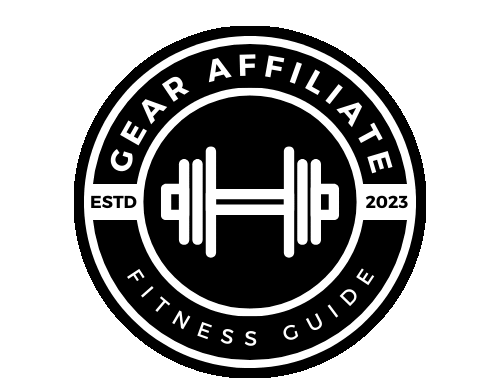
Table of Contents
Understanding the Mechanics of Sit-Ups
Performing sit-ups effectively involves the interplay of various muscle groups, primarily focusing on the core area. The core consists of several muscles, including the rectus abdominis, obliques, and transverse abdominis. When executing a sit-up, these muscles work in harmony to flex the spine and lift the torso off the ground. This movement is crucial, as the strength and stability of the core significantly influence overall athletic performance and contribute to functional movements in various sports.
A proper sit-up begins with the individual lying on their back with knees bent, feet flat on the ground. The hands can either be placed behind the head or crossed over the chest. As one initiates the movement, engaging the core is essential to maintain control and avoid straining the neck or back. It is critical to focus on using the abdominal muscles rather than relying on momentum. By lifting the shoulder blades off the ground in a controlled manner, maximum effectiveness of the exercise is achieved.
Common mistakes during sit-ups can undermine their benefits and even lead to injuries. For example, pulling on the neck while performing sit-ups can lead to strain and discomfort. Additionally, overarching the back or using excessive hip flexor engagement detracts from the core’s role in the exercise, reducing its effectiveness. Proper form not only enhances muscle engagement but also helps prevent injuries, ensuring that athletes can safely incorporate sit-ups into their exercise routines.
Moreover, understanding the biomechanical principles behind sit-ups highlights their relevance in athletic training. They serve not only as a measure of abdominal strength but also enhance overall performance due to their involvement in stabilization and balance. Therefore, when performed correctly, sit-ups can be a valuable addition to any athlete’s training regimen aimed at building core strength and ensuring functional fitness.
Sit-Ups in the Context of Athletic Training
Sit-ups have long been a staple in the fitness routines of many athletes, primarily due to their focus on developing core strength. However, the effectiveness of sit-ups as a core strengthening exercise has been a topic of discussion among fitness experts and trainers. When placed within the framework of a comprehensive athletic training program, sit-ups may not always stand out as the most effective option. While they do engage key muscle groups such as the rectus abdominis and the hip flexors, there are alternative exercises that may offer more functional benefits.
Exercises like planks, for example, provide a more holistic approach to core training by engaging multiple muscle groups simultaneously, including the obliques and stabilizing muscles in the back. This is particularly important for athletes, as a strong and stable core is essential for optimal performance in various sports. Similarly, compound movements such as deadlifts engage the core along with several other muscles, enhancing overall strength and functional movement patterns critical for athletic performance.
Several research studies suggest that traditional sit-ups may not be the most effective method for improving athletic strength. For instance, a study published in the Journal of Strength and Conditioning Research highlighted that while sit-ups can contribute to muscle growth, they may not significantly enhance athletic performance as compared to other focused training methods. Furthermore, expert opinions within the fitness community indicate a growing preference for exercises that promote core stability and functional movement rather than isolated muscle training.
In conclusion, while sit-ups can still play a role in a well-rounded fitness routine, their contribution to athletic training may be limited when juxtaposed with more effective core exercises. Emphasizing a variety of strengthening techniques can provide a broader spectrum of benefits necessary for athletic performance.
Benefits and Drawbacks of Sit-Ups
In evaluating the efficacy of sit-ups as part of an athletic strength training routine, it is important to consider both the advantages and potential drawbacks that come with this exercise. One of the primary benefits of sit-ups is the significant improvement in core strength. The core plays a vital role in maintaining overall body stability and coordination, which are essential for athletic performance. By effectively targeting the abdominal muscles, sit-ups can enhance endurance and power in various physical activities.
Convenience is another advantage of sit-ups. This exercise requires no special equipment and can be performed virtually anywhere—making it highly accessible to individuals at all fitness levels. The ability to incorporate sit-ups into any workout routine allows athletes to challenge their core muscles consistently, thus promoting further strength gains.
However, despite these benefits, there are some notable drawbacks associated with sit-ups. One major concern is the potential for injury, particularly to the lower back. Improper form during sit-ups can lead to excessive strain on the lumbar region, which may exacerbate pre-existing conditions or lead to new injuries. Additionally, individuals with limited flexibility or core strength may find traditional sit-ups ineffective or uncomfortable, raising questions about their suitability for all athletes.
Moreover, there is ongoing debate regarding whether sit-ups are the most beneficial core strengthening exercise. Some fitness experts argue that alternative exercises, such as planks or leg raises, could be more effective in targeting the core without the associated risks of sit-ups. Therefore, while sit-ups can certainly contribute to improved athletic strength, it is crucial to balance them with other exercises and considerations to minimize the potential downsides. This balanced approach can help athletes achieve optimal core development and performance in their respective sports.
Alternative Exercises to Consider
While sit-ups have long been a popular choice for building core strength, several alternative exercises can offer similar or even enhanced benefits for athletic performance. Engaging in a variety of core-strengthening activities not only helps in preventing injuries but also promotes overall stability, balance, and functional strength.
One effective alternative is the bicycle crunch, which targets the rectus abdominis and the oblique muscles. To perform a bicycle crunch, lie on your back with your hands placed behind your head. Lift your legs off the ground and position them at a 90-degree angle. As you bring your right elbow towards your left knee, extend your right leg straight while alternating sides. This motion mimics the pedaling motion of riding a bicycle, thus effectively engaging multiple muscle groups. It enhances not just core strength, but also improves coordination and flexibility.
Another valuable exercise is the hanging leg raise. This movement is particularly effective for building lower abdominal strength and encourages grip strength through its hanging position. To execute this exercise, hang from a pull-up bar and engage your core as you slowly raise your legs towards your chest, ensuring that your back remains stable and straight. It is crucial to control the movement; swinging should be avoided to maximize the benefits and enhance muscle activation.
Stability ball exercises also provide an excellent means of strengthening the core. For instance, performing a stability ball plank can significantly improve core stability and enhance overall body control. By positioning your forearms on the ball and feet on the ground, maintain a straight line from head to heels, activating the core throughout the duration of the hold. This dynamic engagement challenges your body’s balance and engages various muscles simultaneously.
Incorporating these exercises into a well-rounded fitness regimen can not only serve as effective substitutes for sit-ups but can also enhance overall athletic performance. Diversifying workouts promotes muscle development and reduces the risk of plateaus, allowing for continued progress in strength and endurance.
If you found this post to be helpful, then you may be interested in the rest of our blog page here.
At Gear Affiliate, we always want to give our readers more resources to research. Below are a few sources that we have found to be helpful relating to this topic.


